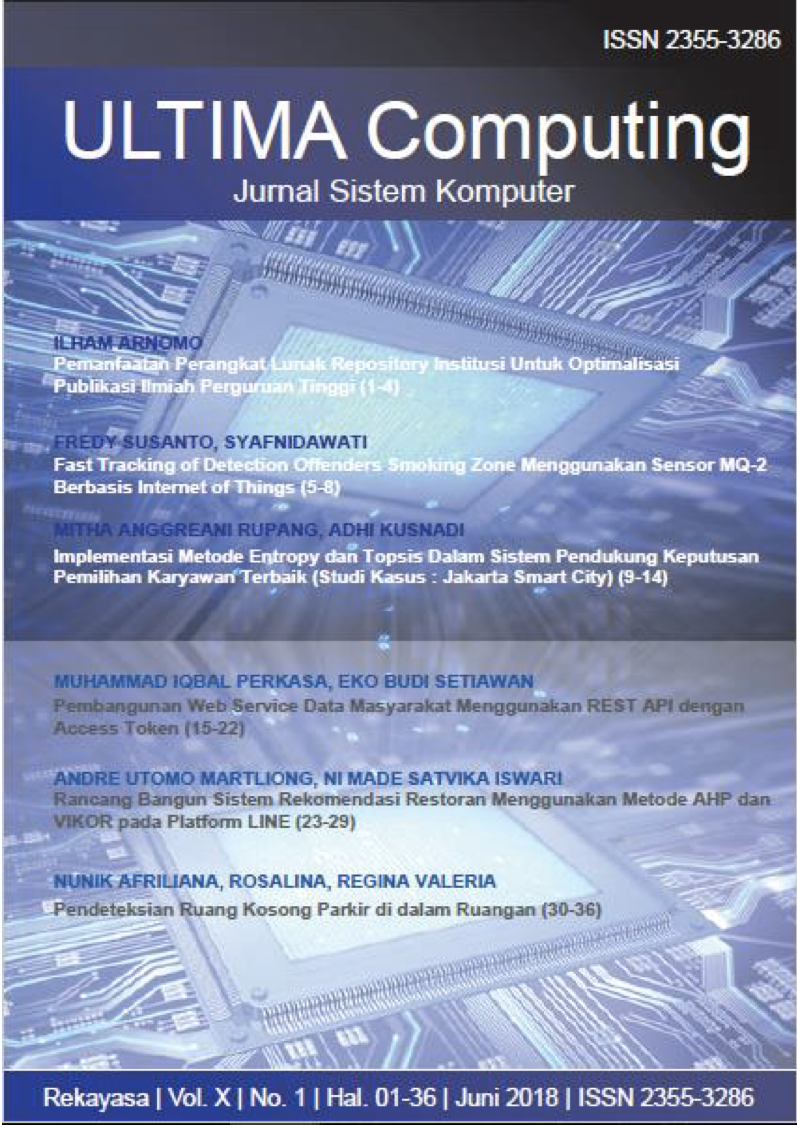Implementasi Metode Entropy dan Topsis Dalam Sistem Pendukung Keputusan Pemilihan Karyawan Terbaik
Studi Kasus : Jakarta Smart City
DOI:
https://doi.org/10.31937/sk.v10i1.887Abstract
Employee is a part of the company's most important asset in its efforts to maintain survival, growth, ability to compete and profit. At this time the process of assessment of employees in Jakarta Smart City is still in the form of manual and the decision only from one party only, so the process is still not accurate. So it takes the methods that must be able to replace that system. For that reason, a Decision Support System (SPK) was created to determine the best employees in Jakarta Smart City. In the system implemented the method of Entropy and TOPSIS. Entropy method can be trusted in determining the weight of the criteria to be used. And TOPSIS method can quickly perform the ranking process. Criteria to be used are quality and quantity of work, obedience, cooperation, morale, and work discipline. The index of satisfaction level of respondents to the decision support system ranges from 70% -80%, meaning that the assessment of the system created gives results at a fairly good level.
Index Terms”employee, nter key words or phrases in alphabetical order, separated by commas
Downloads
Downloads
Published
How to Cite
Issue
Section
License
Authors retain copyright and grant the journal right of first publication with the work simultaneously licensed under a Creative Commons Attribution-ShareAlike International License (CC-BY-SA 4.0) that allows others to share the work with an acknowledgment of the work's authorship and initial publication in this journal.
Authors are able to enter into separate, additional contractual arrangements for the non-exclusive distribution of the journal's published version of the work (e.g., post it to an institutional repository or publish it in a book), with an acknowledgment of its initial publication in this journal.
Copyright without Restrictions
The journal allows the author(s) to hold the copyright without restrictions and will retain publishing rights without restrictions.
The submitted papers are assumed to contain no proprietary material unprotected by patent or patent application; responsibility for technical content and for protection of proprietary material rests solely with the author(s) and their organizations and is not the responsibility of the ULTIMA Computing or its Editorial Staff. The main (first/corresponding) author is responsible for ensuring that the article has been seen and approved by all the other authors. It is the responsibility of the author to obtain all necessary copyright release permissions for the use of any copyrighted materials in the manuscript prior to the submission.















